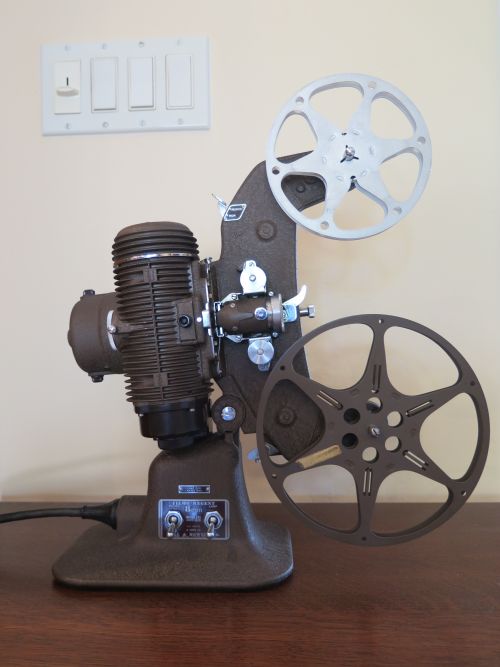 (CLASSICAL REFERENCE IN TITLE, as Glenn Reynolds says.)
(CLASSICAL REFERENCE IN TITLE, as Glenn Reynolds says.)
Carol’s sister Kathy and her husband Bob came out to visit this past week. Their mission (among others) was to get out of Chicagoland’s frigid temps and snow. So what did we have here during their visit? Frigid (if not Chicago-frigid) temps…and snow. Not exactly where we live, but my friend Debbie said snow stuck to the ground in Fountain Hills, a Phoenix suburb a few miles east of us. And yes, the temps dipped below freezing in our neighborhood on more than one occasion. Plus, we scored an inch and a half of rain in a couple of days. The photo below shows the view from Bell and Hayden looking north, toward Skull Mesa and Continental Mountain. In all the years we’ve lived here (going on twenty, in two stretches) I’ve never seen that range go white from top to bottom. A little snow on the tops, now and then, sure, but not snow covered.

Timing, timing. Kathy says they’ll be back when it’s in the 100s. I can’t make many promises on behalf of Phoenix weather, but I’ll confidently promise that there will not be frost in the yard here in June.
So we stayed inside a lot. One of our other missions was to evaluate Carol’s family’s home movies. There’s a place here in Scottsdale that will convert 8mm movies to digital movie files. What we wanted to figure out is what reels are worth converting (the process is not cheap) and what can be left in the box. Carol and I have had her father’s movie projector in various closets for a lot of years. We took it out and set it on the coffee table, after dropping a spare white sheet over our big-screen TV. Bob and I stared at it. And it soon dawned on us: Shark nerds we were not.
The device is a Bell & Howell Filmo Regent 122, Model L. I can’t nail down a vintage tighter than “1940s” from online searches. That’s about right: Carol’s dad had a movie camera in the late 1940s, and it stands to reason he’d buy a projector at the same time. Bob’s family had had one long ago as well, but (as with Carol’s) the dads ran the projectors, and the kids watched the movies. As for me, we got into the 8mm movie scene late, and started with the 1965-vintage Super 8. We still have that projector, but it’s self-feeding and requires almost no fussing-with. (That is, when it worked, which it doesn’t.) Reviewing Super 8 movies from my childhood will require a functional projector. I’m working on that.
No matter. What we had were 8mm movies. And we were determined to watch them.
We had a rough idea how they worked. Bob recalled that you had to form two film loops above and below the lens. There were loads of little levers, which we dutifully stared at, rubbing our chins. Then Carol spoke the obvious: “Go find a tutorial on YouTube.” Shazam! Not one but several…actually, they were legion. And once we figured out from the tutorials what all the levers did, getting the film threaded was no more than a severe nuisance. At my house back in the ’60s, we just fed the end of the film leader into a slot, and the projector did the rest. This took a lot more careful work. Some of the films were well over sixty years old, and fragile.
With practice, we got better and faster at it. And we had a lot of practice. It took two nights to go through them all, what with manual threading and manual rewind. Carol’s dad had spliced a lot of the little reels together into several larger, 25 minute reels, but the bulk of the reels were the 50′, five minute size just as they came out of the camera.
Most of the footage was of Carol and Kathy from birth to 15 or 16, at weddings, family vacations, dance recitals, and just running around in the yard. One of the first things we noticed is that once she was three or four, any time Carol was on camera, she was dancing. Carol, of course, is a spectacular dancer, as I’ve learned at various events down through the almost fifty years that we’ve been together. She started early, and went at it with manic enthusiasm and supernatural grace.
There were people in the movies whom Carol and Kathy had rarely seen, especially their grandparents, who (like mine) mostly died when we were small children. Overall, the films were well worth preserving as digital files, with only a few exceptions.
It was also yet another rubbing-of-the-nose in how far we’ve come since our childhoods. My Canon G16 camera takes brilliant, hi-res video. Heck, my phone takes perfectly fine video, if not as good as the G16’s. I have a Nikon film SLR, and my father’s medium-format Graflex. I doubt I will use either again. I suspect most young people have never experienced taking a roll of used film to Walgreen’s (or somewhere else like that) for processing, and then waiting a week for the pictures to come back. Bad shots cost the same 30c each as the good ones, so learning by trial and error was costly.
All gone, gone and mostly forgotten, except by those of us who thought we were shark nerds…but were wrong.











More memories Jeff. When I was in high school you either HAD to take a “Study Hall” which was where the spit ball fights broke out at least once a week, or you had to find something else such as being a teachers aid for a class period or, and best of all, being an “Audio Visual Aid”. After one term as an aid to the Chemistry teacher (another story about that) I became an Audio Visual Aid. There were about five of us in all and since we all had classes to take we worked sort of rotating shifts that we managed ourselves. There was a separate room off library that is where the equipment was stored and a schedule of what classes needed us. We were pretty much the only ones ever in the room and no other students were allowed in. We were all card carrying geeks by then and had standing hall passes to go anywhere in the school any time. We learned to operate all the equipment very quickly and even how to make some minor repairs if needed. While none of the projectors were quite as old as in your lead photo, and all were 16mm they all worked about the same. The only down side was the occasional film cut from trying to clear a film with bad sprocket holes, or burn from the very hot projector bulbs. I kept up with a few of the others over the years and two of us became engineers, and one a medical doctor. I recently learned that one of the other AV Aids was a roving troubleshooter for a medical equipment company as top level tech on their line of CT and MRI scanners. Thanks for the memories and now to figure out what to do with my old box of 8mm films and a very ancient Kodak projector from the early 1950’s
Back in 2004, I converted my mother’s voluminous archive of 8mm and Super8 films (8+ hours’ worth, from the early 1950s to the 1980s) to video, using a projector, a camcorder, and some free video processing software (VirtualDub). (The timing was fortunate, since most of the film was later lost in a flood.) As DIY projects go, it was rather enjoyable. I did waste some time trying to cobble together various electromechanical devices to adjust the (highly variable) framerate of the projector to that of the camcorder, but that turned out to be unnecessary.
There are two fundamental problems to overcome: the bulb illumination pattern (irregularly shaped, brighter in the middle, dim at the edges) and the framerate. The bulb pattern is easily fixed; just take some shots of the screen being lit by the bare projector bulb (no film), then average those into a mask. When processing the video with VirtualDub, I used that mask to automatically normalize the brightness, digitally lightening the dark areas around the edges while not overexposing the already well-lit center. The framerate problem is trickier – consumer-grade 8mm film cameras used mechanical timing, which was incredibly imprecise (one of our old cameras used a crank-wound spring as a power source). In my sample set of films, I found effective framerates between about 12 and 20 frames per second. Consumer camcorders generally use a precise fixed framerate, and simply recording the 8mm film produces awful flickering. Here again, VirtualDub came to the rescue – its deflicker filter adjusts the luminance of each frame based on a moving average of the past 25 frames, smoothing things out. (Ever the tinkerer, I wrote my own version of this filter to address some projector-specific issues.) The results are very nice, despite the usual amateur-photographer issues with focus, excessive zoom, camera shake, and quick panning. The animation is smooth and even, and the images are just as sharp as the somewhat grainy 8mm originals.
I was then able to take the processed video files and arrange them onto DVDs, with tables of contents and menus so that various years, locations, events, and people are easily located. I’ve also uploaded much of it to YouTube, for the extended family to see. I didn’t bother adding cheesy music; I always intended to have my mother make a narration track, where she explained who the various people are, the locations and events, and whatever other memories occurred to her. That hasn’t happened yet – I should probably move that nearer the top of my to-do list, before it becomes too late.
(Also, for anyone scratching their heads about the post title: http://i67.tinypic.com/m80jye.jpg )
Thank you, Jonathan! I looked and looked and couldn’t find that anywhere.
I have a couple of old 16mm projectors…one silent, one sound. I have found that if has not run them for several years, it is good idea to run them without film for a while till the lubrication (which should also be added) has time to spread through the projector.